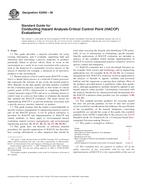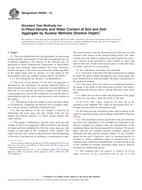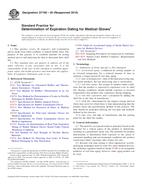1.1 This test method covers the determination of slow crack growth (SCG) parameters of advanced ceramics by using constant stress-rate flexural testing in which flexural strength is determined as a function of applied stress rate in a given environment at ambient temperature. The strength degradation exhibited with decreasing applied stress rate in a specified environment is the basis of this test method which enables the evaluation of slow crack growth parameters of a material.
Note 1–This test method is frequently referred to as “dynamic fatigue” testing (Refs (1-3)) in which the term” fatigue” is used interchangeably with the term “slow crack growth.” To avoid possible confusion with the “fatigue” phenomenon of a material which occurs exclusively under cyclic loading, as defined in Definitions E1150, this test method uses the term “constant stress-rate testing” rather than “dynamic fatigue” testing.
Note 2–In glass and ceramics technology, static tests of considerable duration are called “static fatigue” tests, a type of test designated as stress-rupture (See Definitions E1150).
1.2 Values expressed in this test method are in accordance with the International System of Units (SI) and Practice E380.
1.3 This standard does not purport to address all of the safety concerns, if any, associated with its use. It is the responsibility of the user of this standard to establish appropriate safety and health practices and determine the applicability of regulatory limitations prior to use.
Product Details
- Published:
- 06/10/2001
- Number of Pages:
- 9
- File Size:
- 1 file , 130 KB


